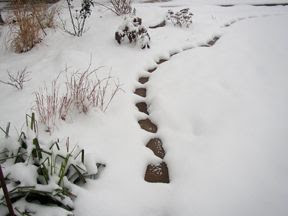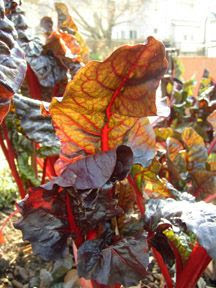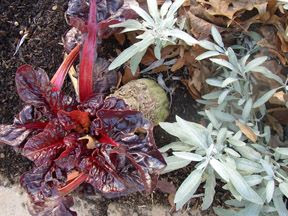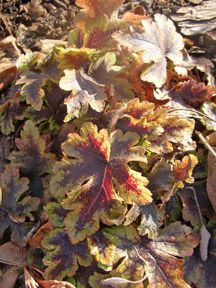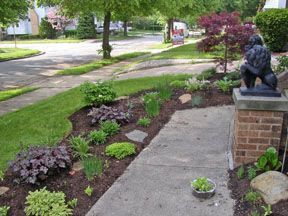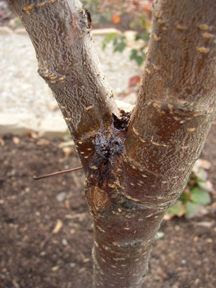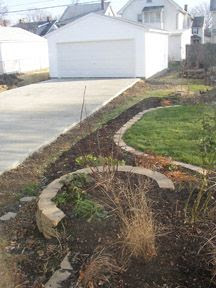In fact, I dare to suggest that all gardeners who grow things with any consideration at all for aesthetics are artists at heart. Some of my fellow garden bloggers may already be disagreeing with me, or at least shaking their heads and saying, "Not me--I'm no artist," but wait. I just did a search for quotes with the subject of "artist" in one of my favorite quote databases, and found many quotes that seem to back up my theory. So let's explore a few ideas before you tell me that I'm wrong:
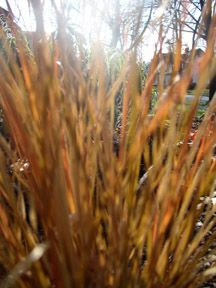 "All civilation and culture are the results of the creative imagination or artist quality in man. The artist... makes life more interesting or beautiful, more understandable or mysterious... more wonderful." - George Bellows
"All civilation and culture are the results of the creative imagination or artist quality in man. The artist... makes life more interesting or beautiful, more understandable or mysterious... more wonderful." - George BellowsWhen I first started gardening, I was attracted to the idea of naturalistic gardens. I am very reverent about the beauty of nature, and also liked the idea of putting in plants that were well-suited to their surroundings and thus would not need much babying. In reality, I found "naturalistic" planting to be a huge letdown, and also somewhat of an inherent lie.
The truth is, when we garden, we are not randomly and naturalistically planting. We weed out unwanted plants. We plan for aesthetically beautiful combinations and appreciate the occasional happy accidents. I believe that Piet Oudolf and Noel Kingsbury expressed my own feelings best in Planting Design: Gardens in Time and Space: "Strictly speaking, nothing that is made by people can be truly natural, and since gardens (unless they are simply enclosures of wild landscapes) are by definition human artefacts, it is perhaps misleading to speak of natural gardens."
Gardeners make plantings that are more interesting, more beautiful, more understandable, more mysterious, Therefore, they are artists.
 "He who works with his hands is a laborer. He who works with his hands and his head is a craftsman. He who works with his hands and his head and his heart is an artist." - Francis of Assisi
"He who works with his hands is a laborer. He who works with his hands and his head is a craftsman. He who works with his hands and his head and his heart is an artist." - Francis of AssisiAll gardeners work with their hands, sometimes with the aid of a tool or with the protection of a glove but always with their hands. We use our heads, too, in planning out the sizes of beds or the spacing of annuals. And in diagnosing plant diseases and sussing out whether too much rain or too little sunshine is the cause of a plant's lackluster performance in a certain spot.
And gardeners definitely use their hearts. Some plants we keep in the garden simply because they make us smile, or because they remind us of our roots or a certain special person. Sometimes our gardens break our hearts, whether ice storms cause tree limbs to fall or whether our own mistakes cause the untimely demise of a favorite plant.
 "Children, like animals, use all their senses to discover the world. Then artists come along and discover it the same way all over again." - Eudora Welty
"Children, like animals, use all their senses to discover the world. Then artists come along and discover it the same way all over again." - Eudora WeltyI see this childlike amazement at the natural world over and over again in various garden blog posts. Lisa over at Millertime constantly amuses me with posts that express her delight in everything from vermicomposting to raising fungus. Don (who I think of as Iowa Garden Boy) takes beautiful pictures of snowdrops and snow-mired winter grasses that non-gardeners would walk right by... and he posts them, too, for all of the rest of us to appreciate. And so many other garden bloggers experience and share their own childlike amazement in other ways as well.
So, have I proven my case beyond a reasonable doubt? No court of law would think so. But I'm more interested in what my fellow artists--er, gardeners--think.
Do you consider yourself an artist? Do you simply try to keep your flower combinations from clashing or are you driven to create particularly dynamic and exciting combinations?
Do you copy the designs of the "old masters" like Vita Sackville-West, Gertrude Jekyll, and Roberto Burle Marx? Do you subscribe to a certain style of design, like English borders or cottage gardening, or do you prefer to be eclectic?
Do you find yourself tending to stay with one type of plant (perennials, vegetables, shrubs, annuals) or are you fully into mixing your artistic media?
Do any of these art analogies work for you--in your head and in your heart? Or do you think I must have delusions of grandeur to think of myself as an artist? I would love to hear your thoughts, either way.








